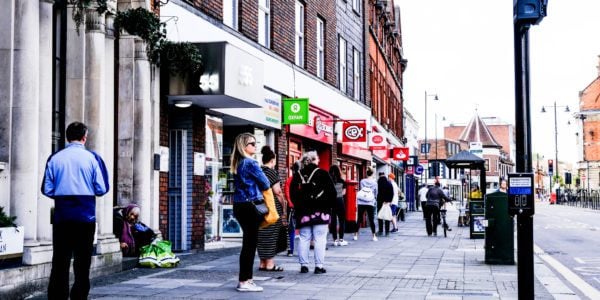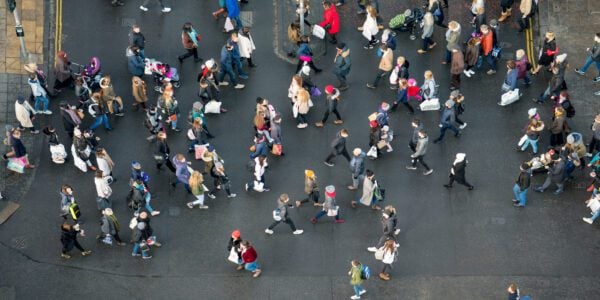Greenhouse gas emissions produced on UK soil fell 38% between 1990 and 2018 – the fastest per-capita reduction in the G7. But achieving net zero emissions by 2050 will not be easy – the pace of emissions reductions will need to accelerate significantly, and many low-cost opportunities to cut carbon emissions have already been exploited.
In new analysis published today as part of the 2021 IFS Green Budget, funded by the Nuffield Foundation and produced in association with Citi, IFS researchers examine current UK climate policy.
Key findings
- Current UK climate policy is fiendishly complex. The most striking feature is the sheer number of policies involved and the wildly inconsistent incentives to reduce greenhouse gas (GHG) emissions that they produce. Overall tax rates on emissions vary dramatically, including by the source of the emissions and the type of end user. For example, emissions from electricity production and road fuel are taxed relatively heavily, while emissions from households’ gas use and fuel for long-haul air travel are effectively subsidised.
- Setting highly uneven incentives is an inefficient way to reduce GHG emissions and is making the transition to net zero more costly than it needs to be. The government should move towards greater consistency in taxes on emissions: the areas that will provide the biggest challenges in future – home heating, transport and food – are mostly those where incentives to cut emissions are currently lowest.
Looking at the current array of climate policies in more detail, the research finds that:
Policies affecting household energy use need to be more consistent
- Not only is there no carbon tax on domestic gas use, but the fact that VAT is levied at just 5% means that burning gas in the home is effectively subsidised. Distributional concerns make across-the-board tax increases difficult, but a combination of tax, compensation, subsidies for insulation, and support to move to other forms of heating will be crucial.
- Policies to achieve net zero will have important distributional consequences. The richest tenth of households have an average carbon footprint more than three times larger than that of the poorest tenth of households. But the spending of the poorest tenth of households is associated with 22% more carbon emissions per pound spent than the richest tenth of households, meaning they will be more affected by policies that increase the cost of emissions.
- Compensation schemes can be designed to help those who are hardest hit by the costs of cutting emissions. Revenues raised through more extensive carbon pricing could be used to fund higher benefit payments, tax cuts or expenditure targeted at those hit hardest by climate policies. But some types of households will be difficult to target help towards; even within low-income households, there is a lot of variation in energy use, for example.
- Energy efficiency subsidies can play a key role here. But government schemes to subsidise energy efficiency have changed frequently and given inconsistent signals to households and suppliers. When government focused subsidies on low-income and vulnerable households in 2013, there was a dramatic reduction in take-up of insulation through government-sponsored schemes. Attempts to establish more general energy efficiency schemes in recent years have been short lived and ineffective, exacerbating the problems of the current gas price surge.
Transport is the largest source of UK emissions and needs a strategy
- Emissions from international aviation more than doubled between 1990 and 2018. Taxes on aviation are low relative to its emissions, particularly for long-haul flights. The government should seek international agreement on how to tax aviation, including during COP26.
- Land transport is the largest source of UK emissions. Fuel duties impose high taxes on road fuels, but have been cut by 20% in real terms since 2010–11, and there is no plan to replace them as people increasingly change to electric cars. The government needs a serious strategy for motoring taxation, including how to tax low-emissions driving in the long term while incentivising the take-up of lower-emissions cars in the short term.
International collaboration is needed to prevent carbon leakage through imports
- The UK is a net importer of products that embed GHGs. Consumption emissions are 37% higher than production-based emissions and ignored for the purpose of the net zero target. A genuine concern is that higher environmental taxes in the UK could drive polluting activities offshore and increase the UK’s imports of carbon-intensive goods.
- Energy-intensive businesses currently receive large discounts from environmental taxes to mitigate risk of such carbon leakage. Instead, the government could consider bringing in a border tax on emissions embedded in imports – like the scheme the EU is considering – though that is not without problems of its own. This is an area in which international coordination would be particularly valuable.
Isaac Delestre, Research Economist at IFS and a co-author of the report, said: “The government could look to replace the raft of existing policies with a single carbon tax, or with an extended emissions trading scheme that covered all emissions. There would be major benefits to moving at least some way towards a simpler set of policies that produced a more consistent set of incentives to reduce emissions. However the government chooses to incentivise greater emissions reductions, close attention should be paid to the distributional consequences. Compensation will likely be needed for some groups who will inevitably lose out from higher carbon prices.”
Peter Levell, Associate Director at IFS and another co-author of the report, said: “Most of the reductions in the UK’s greenhouse gas emissions since 1990 have come from just three sectors: energy supply, waste management and industrial processes. These sources now only account for one-quarter of emissions, meaning future reductions will have to come predominantly from elsewhere. Reaching net zero will require faster emissions reductions in politically challenging areas, where incentives to cut emissions are relatively weak, and where progress to date has been particularly slow, including domestic heating, agriculture and aviation.”






















































